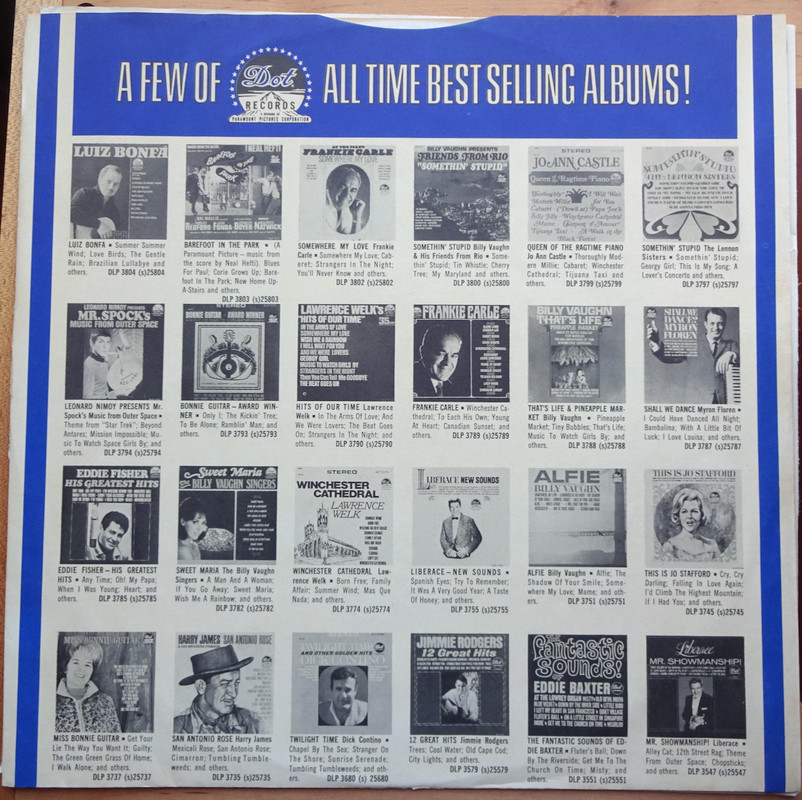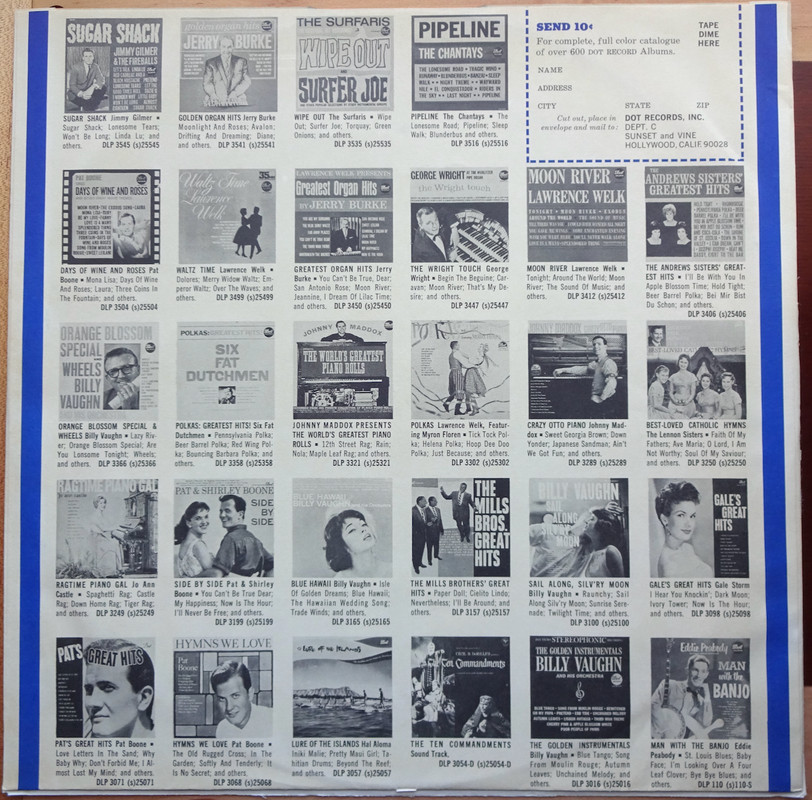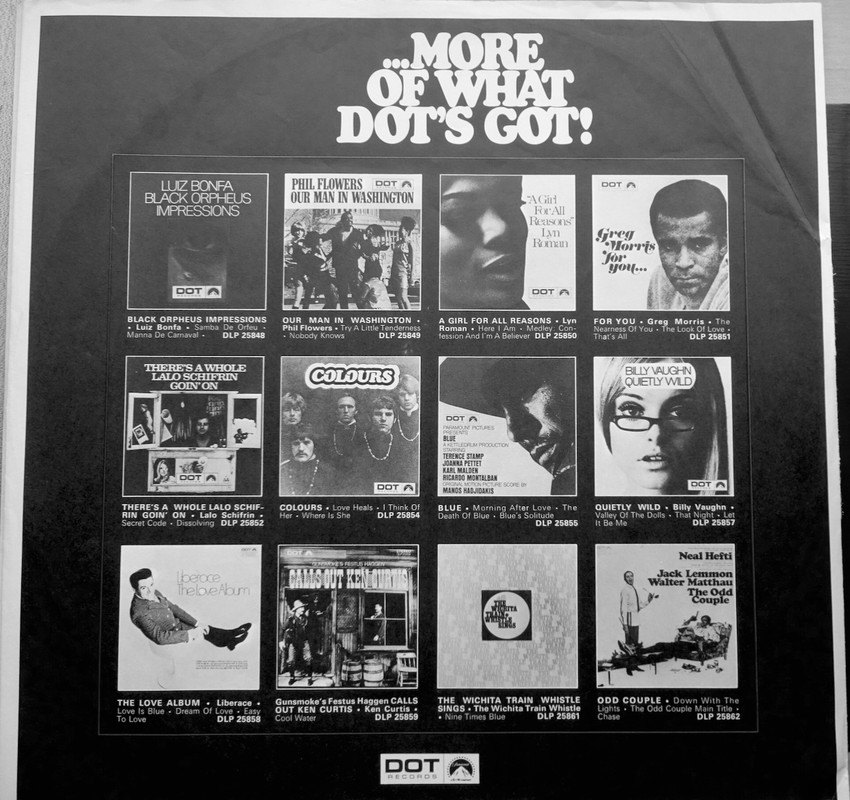Was waiting for someone to mention this. They had no less than Count Basie on that label and other jazz artists as you mentioned. To reduce Dot to the other nonsense is to miss a large part of Dot's legacy.
Ed
I think I was clear that the jazz is worthy of respect but didn't overall dilute the label's image.
Basie was one of the first signings the label made after Paramount bought it. He was there for two years (1967-69) and did an album of songs from a Paramount film (HALF A SIXPENCE), two albums with The Mills Brothers, one album with Kay Starr, one studio album and one live album.
Lalo Schifrin also came to the label through his work with Paramount (MISSION: IMPOSSIBLE).






